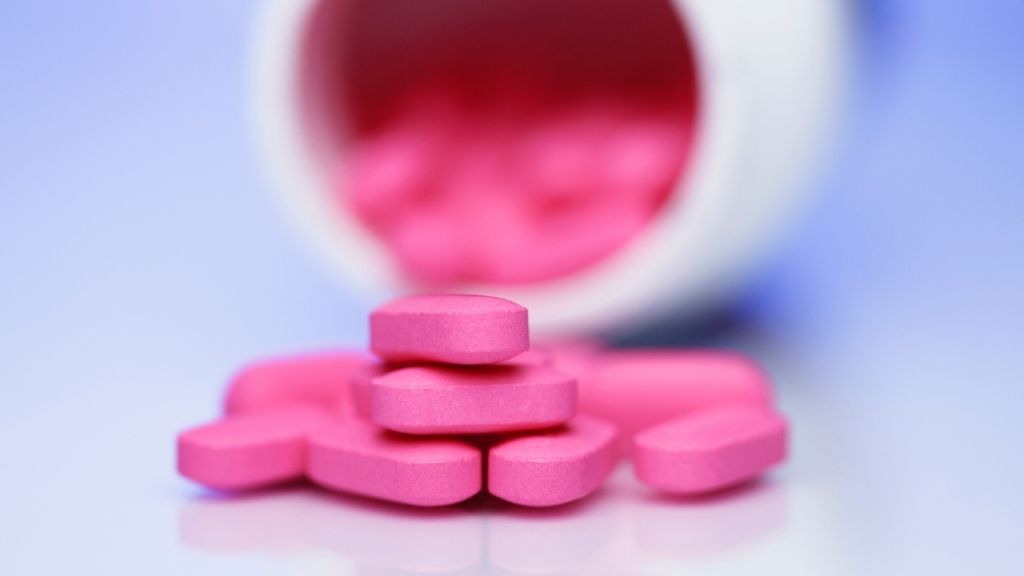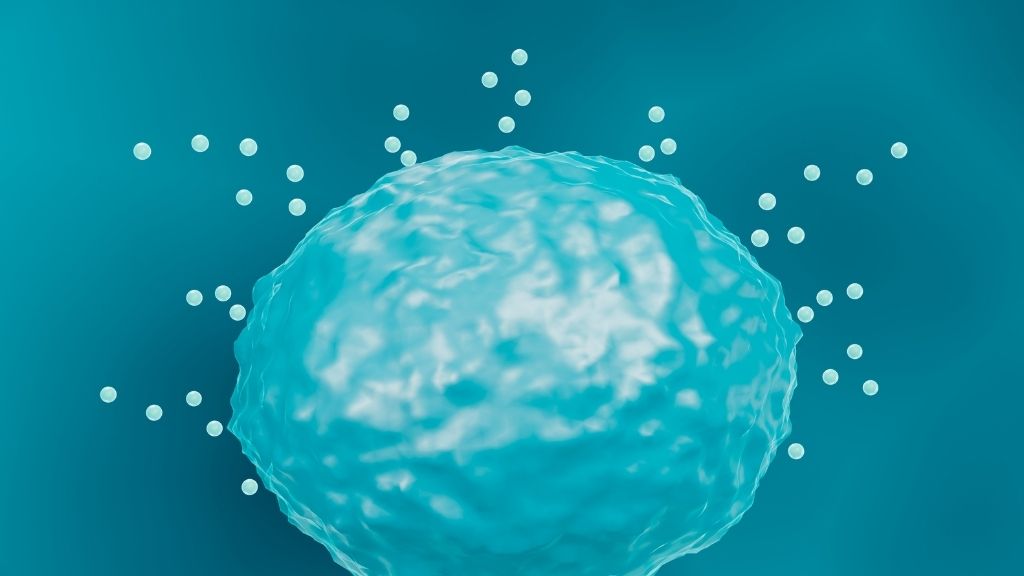Antihistamines to treat long COVID: What you need to know
Antihistamines seem to help a subset of long COVID patients.

Over-the-counter antihistamines, typically taken for allergies, may help relieve the debilitating symptoms of long COVID in some people, a new case report suggests.
The report, published Feb. 7 in The Journal for Nurse Practitioners, included two middle-age women with long COVID, a condition also known by the medical term "post-acute sequelae of COVID-19" (PASC). After catching COVID-19 in 2020, the women developed a slew of symptoms that lingered for many months after their initial infections had cleared; these long-lasting symptoms included cognitive impairment, skin rashes and bruising, chest pain and profound fatigue.
At some point, many months after first developing these symptoms, both individuals took antihistamines for unrelated allergies. They found that, unexpectedly, their long COVID symptoms improved after they took the drugs. Both individuals now take a daily regimen of antihistamines and have said they've nearly regained their pre-PASC level of functioning, according to the case report.
Related: 20 of the worst epidemics and pandemics in history
These two anecdotal reports align with the results of a larger study, published Oct. 5, 2021 in The Journal of Investigative Medicine, which included 49 long COVID patients. Of these patients, 26 were given antihistamines. Of these, 19 reported complete or partial resolution of their symptoms. By comparison, only six of the other 23 patients, who were not given antihistamines, reported improved symptoms in the same time period.
These two reports add to a growing body of evidence that antihistamines may be helpful for treating long COVID, said Dr. Lawrence Afrin, senior consultant in hematology/oncology at the AIM Center for Personalized Medicine in Purchase, New York, who was not involved in either study. "The only question then becomes, 'What's the mechanism by which those drugs help?'" he said. Afrin and his colleagues suspect that mast cells, which release histamine, may go haywire in some patients following a COVID-19 infection and unleash a flood of the substance into the body.
Antihistamines could theoretically slow the flood to a trickle, as there's evidence that the drugs can help tune down the activity of mast cells, Afrin said; and of course, the drugs also block histamine from plugging into cells throughout the body. That said, more research is needed to confirm the exact role of mast cells in long COVID, Afrin said.
Get the world’s most fascinating discoveries delivered straight to your inbox.
The new case report
Study co-author Natalie Lambert, an associate research professor of biostatistics and health data sciences at the Indiana University School of Medicine, originally identified the two patients featured in the case report. Both patients were members of Survivor Corps, a virtual COVID-19 research and advocacy organization hosted on Facebook; they had both posted about how antihistamines seemed to relieve their long COVID symptoms.
Antihistamines block the compound histamine from plugging into receptors on cells in the body; the drugs typically block either the H1 or H2 receptor. In general, immune cells release histamine when they sense a pathogen, like a virus or bacterium, or a foreign substance like pollen, and the compound triggers inflammation and swelling. In addition to causing allergic reactions, histamine can also act as a chemical messenger in the brain, and drive up the heart rate and acid production in the stomach, according to the National Cancer Institute.
Overall, between mid-March 2020 and mid-July 2021, Survivor Corps members mentioned using antihistamines on the group's Facebook page more than 900 times, Lambert and her colleagues calculated. To gain more insight into these anecdotal reports, the team decided to zoom in on two Survivors' accounts.
The first patient likely became infected with COVID-19 in early January 2020, before diagnostic tests would have been available, the researchers reported. During her initial illness, she developed profound fatigue, fever, dry cough, chest pain, ulcers in her mouth and skin rashes on her torso, among other symptoms. Most of these symptoms resolved within 24 days, but some, like the rashes and chest pain, persisted.
Related: These 4 risk factors may increase your chance of long COVID, study hints
Over the following weeks and months, new symptoms began to emerge, including cognitive impairment and pinpoint bruising on the arms, legs and trunk. In addition, various symptoms that had previously disappeared returned in waves as the months wore on. In June 2020, about six months after her initial illness, the patient ate cheese, to which she has a known allergy. She promptly took the over-the-counter antihistamine Benadryl (diphenhydramine) to stave off an allergic reaction.
"So she did not take this thinking, 'Oh, I'm taking this for long COVID symptoms.' Like she was never expecting to wake up and feel better," said Melissa Pinto, first author of the new case report and an associate professor of nursing at University of California, Irvine. However, the next day, the patient noticed she felt significantly less fatigued and better able to focus than the day before. These positive effects wore off over the following three days, so she tried taking Benadryl again. Again, her symptoms improved, and she continued taking the drug daily for the next six months.
One of her medical providers then prescribed Vistaril (hydroxyzine pamoate), a more potent antihistamine that's also used as an anti-anxiety medication. On a daily dose of the drug, "the patient had a nearly complete resolution of exercise intolerance, chest pain, fatigue, and brain fog," and her bruises, headaches and rashes steadily improved over time, the case report notes. After nine months of treatment, she'd regained about 90% of her pre-PASC functioning, and she was able to fully return to work and regularly exercise, as she had prior to her infection.
The second patient in the case report shared a similar story. She'd likely caught COVID-19 in March 2020, Pinto said. At the time, she tested negative for SARS-CoV-2 on a PCR test, but she then developed chills, shortness of breath and chest pain, and she received a clinical diagnosis of COVID-19 based on these symptoms. The patient went on to develop fever and joint pain, as well as rapid heart rate, difficulty concentrating, abdominal pain, taste and smell loss and distinct rashes on her feet, known as "COVID toes."
Prior to catching COVID-19, the patient had seasonal allergies that she treated with Allegra (fexofenadine), a non-drowsy antihistamine. One day, she ran out of Allegra and used Benadryl instead. As an older, first-generation antihistamine, Benadryl can block histamines from plugging into receptors in the the brain; histamines help to regulate sleep and wakefulness, and by blocking this activity, Benadryl can cause drowsiness, Live Science previously reported.
However, after taking the drug, the patient noticed a marked improvement in her brain fog and overall fatigue. She began taking Benadryl daily and noted continued improvement in these symptoms; her abdominal pain also subsided and her senses of taste and smell returned. She now takes Benadryl in the evening and Allegra in the morning, and on this regimen, she's regained about 95% of her pre-PASC functioning, the case report notes.

More support for antihistamines
The small case report should not be generalized across all people with long COVID, Pinto emphasized. "This is not to be extrapolated as, 'This will help everyone,'" she said. Rather, she said she hopes the case report serves as a jumping-off point for further research and for conversations between other long COVID patients and their medical providers, as they search for potential solutions.
"The nice thing about the antihistamines is there's very little downside," as the medicines are safe, cheap and cause few side effects, Dr. Paul Glynne, the medical director of The Physician's Clinic in London, a consultant physician at University College London Hospitals, and first author of the Journal of Investigative Medicine (JIM) report. For most long COVID patients, "I can't see a good reason not to start antihistamines," he said.
(That said, the long-term use of some antihistamines has been linked to an increased risk of dementia, particularly in older people, according to The New York Times.)
After publishing their JIM report, Glynne and his colleagues began offering all their long COVID patients antihistamines and have now treated upwards of 200 additional patients using a standard protocol, Glynne said. The patients take a combination of H1 blockers and H2 blockers; in general, H1 blockers are prescribed for inflammation and other allergy symptoms, and H2 blockers are prescribed to reduce the amount of acid produced by stomach cells.
Roughly 65% to 70% of their long COVID patients respond well to the treatment and tend to see improvement in specific symptoms first, namely, their skin rashes and gastrointestinal issues, Glynne said. Other symptoms, such as brain fog and fatigue, generally take longer to improve, on the order of weeks.
This delayed response hints that, in addition to blunting the effects of histamine, the treatment may trigger other downstream effects in the immune system, Glynne said. For example, some studies hint that T cells — white blood cells that defend the body against pathogens — become dysfunctional in long COVID. These cells carry both H1 and H2 receptors that antihistamines can block, although more research is needed to figure out exactly how the drugs might affect the cells' function, the JIM report notes.
And then there's the matter of mast cells, Afrin said. There's a large degree of overlap between the symptoms reported by long COVID patients and those seen in people with mast cell activation syndrome (MCAS), a disease where some of the mast cells become defective and spew too many chemical agents. It's possible that "uncontrolled, aberrant mast cells" underlie at least some of the pathology of long COVID, Afrin and his colleagues proposed in a 2021 report in the International Journal of Infectious Diseases. Antihistamines may help to reign in some of this unbridled activity — but for now, that's just a hypothesis, Afrin said.
Much more research will be needed to pin down exactly how antihistamines help long COVID patients. While that's ongoing, though, the easy-to-access drugs could offer some patients relief, now, Pinto said. "While all these other bigger questions are being explored, we have to think about getting patients back on their feet," she told Live Science. Those who are interested in trying the treatment should first consult a medical provider about potential risks and drug interactions, she stressed.
"It's about trying to get these people functioning to a level that they can get back to their lives, get back to work, get back to exercise, without risking a recurrent flare of their post-viral illness," Glynne said, echoing the sentiment. Some of his own patients have improved to the point that they've been able to stop taking antihistamines, although most still take the medications daily, he said.
Afrin, Glynne and Pinto all agree that, even though antihistamines seem helpful for some long COVID patients, they're unlikely to help all long-haulers. Glynne said that roughly 10% to 20% of his patients don't respond to the treatment at all, and even in patients that respond well, not all their symptoms necessarily improve. In particular, dysautonomia, or dysfunction of the autonomic nervous system that controls involuntary actions, like heart beat, does not seem to improve with antihistamines, he said.
"[The treatment] really is part of a sort of wider package of measures," Glynne said. "I don't think there's going to be one single pathway that you block or target that's going to simply treat what is obviously a complex problem."
Originally published on Live Science.

Nicoletta Lanese is the health channel editor at Live Science and was previously a news editor and staff writer at the site. She holds a graduate certificate in science communication from UC Santa Cruz and degrees in neuroscience and dance from the University of Florida. Her work has appeared in The Scientist, Science News, the Mercury News, Mongabay and Stanford Medicine Magazine, among other outlets. Based in NYC, she also remains heavily involved in dance and performs in local choreographers' work.


